Reno Welcomes Wayne Phillips of AOPA for an Air Safety Institute Seminar on Night Flying
Recently, a friend and I attended our first AOPA Air Safety Institute (ASI) Seminar on night flying, and I left with a very cool hat, so I believe you can consider the event a success.
My First ASI Seminar on Night Flying
All jokes aside, the ASI Seminar on “Fly By Night,” hosted by Wayne Phillips of Flight Training Magazine’s “Career Pilot” article series, was incredibly informative, and taught both pilots with thousands of hours, and student pilots like myself lots of surprising and interesting tips and tricks for remaining safe while night flying.
My partner in crime of the evening was MacKenzie, a commercial pilot all of 24 years old who just returned to her hometown of Reno, NV after flying a Cessna 208 Caravan in Hawaii. She recently joined the High Sierra Pilots flying club, founded by Disciples of Flight founder Bryan Stewart, to pursue flight training for her CFI. We’re hoping she sticks around and teaches for our club, based at KMEV in Minden, NV.
We were actually scheduled to go on a night flight that same evening with my instructor Russ Smith into KRNO, but he canceled and recommended we go to the seminar, held at the Atlantis Casino Resort in Reno. So we figured, hey, what the heck, and decided to meet there.
Night Flying in Paradise
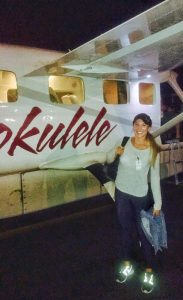
After navigating my way through the impressive Atlantis Casino, I stumbled upon “Paradise A,” the conference room holding the ASI seminar. There was a small, unmanned booth outside the door with AOPA pamphlets and raffle tickets, so I figured I found the right place. I was writing my name down on a ticket when I heard a somewhat incredulous, but friendly voice ask, “And are you an aviator too, young lady?”
I believe I’m not alone in this, but as one of the few women involved in aviation (we make up only 6% of the pilot population), the disbelieving tone of these types of questions tends to elicit one of two emotional responses: defiance (“Yes, and I can fly circles around these boys!”) or pride (“You’re damn right I’m a female pilot!” [Well, student pilot, but no matter]). I didn’t stop to think that the pink hair or spiked jacket may have something to do with the doubtful tone…
Regardless of the motivation, I responded to his question with a proud, “Yep!” and an introduction. Turns out, I had just met Wayne Phillips, our presenter for the evening, and author of subjectively one of the most helpful article series in Flight Training Magazine; “How do I make money doing this?!?”
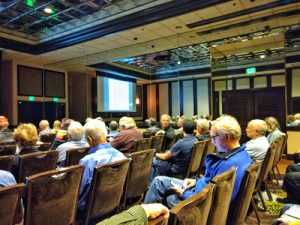
We chatted for a brief moment before MacKenzie came up the stairs behind me, and we made our way inside. Wayne followed us in, saying, “Well, you two just brought the median age here down to about…” he scrutinized the audience. “Forty!”
We laughed and found our seats, getting comfortable as Wayne set up the presentation up front.
ASI Seminar Introduction with Wayne Phillips
Before the night officially began, Wayne told us a bit about himself. A very proud owner of a Cessna Skylane 182RG, Wayne keeps himself busy with these seminars, teaching a two day intensive on airline careers called the Airline Training Orientation Program, or ATOP, doing checkouts in Falcon 20’s (Phillips is an ATP with B-737 and Falcon 20 type ratings), and writing the “Career Pilot” articles for AOPA. As he jokingly says, “I teach people how to make a buck in aviation. Do you know how?” to which the audience responds, “Start with two!”
Wayne then had us raise our hands if we were student pilots, private pilots (VFR only), IFR pilots, and so on until he came to CFIs. “And how many fright inflictors– flight instructors, sorry- do we have in the house today?” A few hands went up, but plenty of laughs were heard. When he asked about DPEs and no hands went up, a pilot in the audience hollered, “They’re all at the bar!” Suffice to say, seams were split.
Pros and Cons of Night Flying
After having us introduce ourselves to others in the audience, we lept into the topic at hand: night flying. Flying at night tends to offer better performance, lower collision risk, smoother air, less traffic, and not to mention some pretty extraordinary views- but at what cost? Wayne showed us a statistic saying nearly one-third of all aircraft accidents at night end in fatality, as opposed to just 13.8% of accidents during the day. And why is that?
It turns out there are a whole plethora of causes, the simplest being, “Well, it’s dark outside.” It’s easier to get disoriented at night, terrain becomes all but invisible, problems and stressful situations seem amplified, and as diurnal creatures, we are less focused, require more oxygen, and have to adapt to the darkness by utilizing off-center viewing and staying far, far away from bright white lights.
Night VFR is completely illegal in some countries, like Canada, Mexico, and the Bahamas, Wayne said, before asking, “Is this such a bad idea?”
Murmurs of the audience seem to suggest both yes and no, to which Wayne responded, “No one likes more regulations, and safety can’t be regulated completely all of the time.” He suggests we self-regulate by proposing personal minimums (he prefers a 5 SM minimum visibility at night, as opposed to the legal 3 SM) and that we treat night VFR as IMC in practice.
Wayne continued that thought by suggesting that we VFR pilots practice attitude/instrument flying much more frequently than many of us do in preparation for night flying, and familiarize ourselves with IFR charts and publications… but we’ll get to that later.
Night Flying Accidents: Case Study 1
A brief video case study of an accident advises that we should pay extra attention to weather at night, and take steps to eliminate the risk of becoming “mesmerized by night views,” by improving our general situational awareness. Sometimes, it seems, we as pilots become fixated on the unique risks of flying at night that we forget to focus on the “every day” parts of flying, like weight and balance and fuel levels. As we all know, the VFR fuel minimums increase from 30 minutes excess to 45 minutes excess at night, but Wayne had a personal story to imply there’s more to it than that.
As a young man, Wayne took three passengers (a double date; two women and another man about Wayne’s size, just over 6’ or so) to dinner in his Piper Warrior. After landing at their destination, Wayne unthinkingly told the line guy to “fill ‘er up,” eliciting groans from the audience of experienced pilots. Anyone familiar with the Warrior (or any small, 4 seat GA aircraft, really) can see the issue here. Surprisingly, the powerful little Warrior got everyone off the runway and home safe, but Wayne admits that thinking back on the mistakes he’s made in his youth that he’s very happy to be alive. The moral of the story is: don’t become so fixated on the uniqueness of night flying that you fall prey to the regular dangers of everyday flying.
Single Engine Pistons Singled Out?
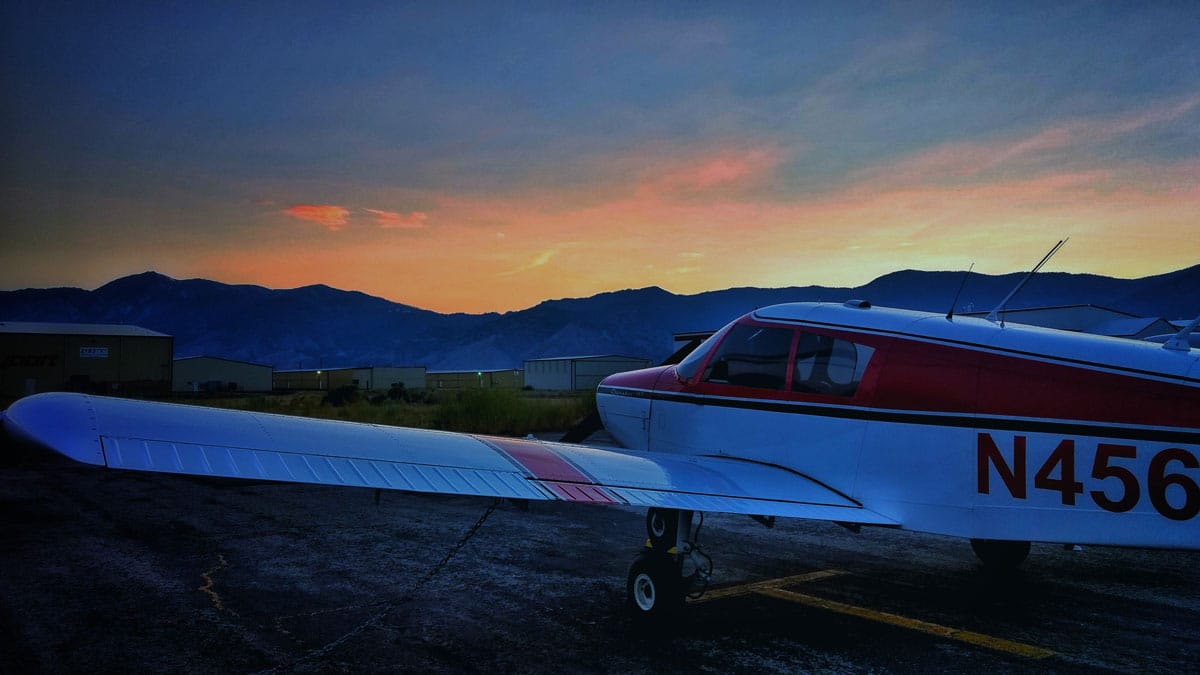
The presentation (prepared by AOPA, not Wayne himself) then asks if single engine pistons are not a “good idea” for night flying, which filled me with no small amount of indignation and caused me to angrily scrawl, “SE pistons always a good idea!!” in my notebook. Forcing myself to push personal opinions aside still can’t sway me from the mindset that all airplanes are just as safe as their pilot (unless, I suppose, it’s a kit plane you built in your basement primarily with duct tape and dreams).
Going IFR as VFR Pilot
Safety is minimizing risk to an acceptable level, Wayne says, implying that “safe” is a unique experience for each pilot. Nevertheless, when flying VFR at night, regardless of skill level or experience, Wayne suggests it’s wise to use IFR charts and minimums to navigate terrain and obstructions safely. For VFR pilots and student pilots like myself who have a limited-at-best knowledge of IFR charts, remember these acronyms: MEA, MOCA, MVA, ODP. Most, if not all, of the following charts, can be found online for free, and can definitely be found in all applicable chart supplements and EFB’s like ForeFlight.
- The MEA, or minimum en route IFR altitude chart (which seems to me to be missing quite a few letters in its acronym), can be used to advise VFR pilots of the lowest safe altitude you can fly that meets obstacle clearance requirements and ensures radio coverage.
- The MOCA, or minimum obstacle clearance altitude, is especially useful for VFR pilots flying at night over either metropolitan or mountainous terrain, because these charts will place you at least 1,000 ft over the highest obstacle in flat land, and 2,000 ft over the highest obstacle in high elevation mountainous terrain.
- MVAs, or minimum vectoring altitudes, are the lowest altitudes a controller can clear you to fly during vectoring and direct routing. Like MOCAs, MVAs will place you 1,000 ft above the obstacle in flat lands or 2,000 ft above the obstacle in mountains, but it will also place you at least 3SM horizontally from the obstacle as well.
- ODPs, or obstacle departure procedures, keep IFR aircraft clear of obstructions during climb out. These are especially important in non-radar environments and without the assistance of ATC, or if you fly in and out of areas like KTRK where you’re surrounded by gigantic mountains and gigantic trees in every direction.
Night Flying Case Study 2: Don’t Be Afraid of ATC
If you are flying VFR at night, Wayne strongly recommends using flight following and requesting MSAW, or minimum safe altitude warnings, ensuring you will be kept both out of the path of other traffic, and out of the trees. A tragic case study provided tells the story of a Rockwell Commander and its 6 occupants dying after flying straight into a mountain outside of Phoenix, Arizona. The pilot had never flown that path at night but had flown it many times during the day. He didn’t request flight following and stayed lower than he should have to avoid flying through Class B airspace. Unfortunately, a simple MSAW could have saved his life and the lives of his children and passengers.
As a student pilot who is fairly intimidated by talking to ATC, this case study was a real wake-up call. A seasoned pilot who didn’t want to “deal” with clearances and radio calls got him and his passengers killed. Wayne says that some pilots feel like they won’t be allowed into the airspace even if they do ask, so they just go far out of their way to avoid it. He then offers this advice:
Pilot: “Skylane 1234 Sierra requesting clearance through Class Bravo airspace.”
Controller: “Unable.”
Pilot: “I really need to go through your airspace.”
Controller: “Unable.”
Pilot: “Please?”
Controller: “Unable.”
Pilot: “I’m declaring an emergency, I’m coming through.”
Controller: “Unable.”
Pilot: “Fine! Give me your initials, please.”
Controller: “…Skylane 1234 Sierra cleared for passage through Class Bravo airspace. Have a good night.”
After the laughter died down, Wayne goes on to say that this is incredibly unlikely and you’ll probably never have any issues with ATC clearances, especially at night when there’s typically less traffic to worry about.
Take Control When Night Flying
Though many things are under the pilot’s control when it comes to safely flying at night, there are some environmental and mechanical issues to be aware of, like pilot controlled lighting, wind, and cockpit lighting. Like anything electric, PCL can sometimes simply not work (or you may be on the wrong frequency… oops!), and it can be hard to judge ground-level wind speed and direction at night when it’s too dark to see the windsock. (This seems like an excellent time to remind everyone that your beacon should be on whenever the engine is on, unlike other aircraft lights that require you to pay attention to things like “civil twilight.”)
Wayne asked the audience if they’ve ever “been burned” by pilot controlled lighting or AWOS. Some hands went up, many people murmured agreement. He followed this up with, “Have you ever abandoned a nighttime approach due to PCL failure or wind?”
I glanced around. No hands went up. Wayne looked a little surprised before saying in a dramatic, action-movie voice, “We have real pilots here in Nevada.” Everyone cracked up at their own expense, enjoying the solidarity of a community of pilots influenced by the macho attitude of the “last bastion of the Wild, Wild West,” as I like to call it. Wayne then recalled a story where he was approaching to land at a small airport late at night, his parents waiting there to pick him up. AWOS reported winds from 310 at 4. Wayne experienced something a little more along the lines of winds from 150 at 27, nearly a direct and very strong crosswind to the airports only runway. After executing a “humongous crab” nearly to the ground, he bailed out and went to another nearby airport with more runway options, much to the displeasure of his already put-out parents.
We have real pilots here in Nevada- Wayne Phillips
Zap! You’re It: Weather Dangers and Night Flying
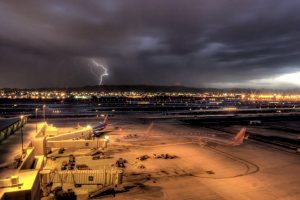
Another weather-related “character building experience” Wayne recalled was being vectored through two thunderstorms at night. Departing the airport, Wayne experienced beautiful, smooth air, and a fantastic lightshow ahead where lightning was reenacting the finale of a fireworks show. ATC comes on, asking, “We have two cells ahead, one at 11’o’clock and the other at 1’o’clock. We can vector you between them or around if you want to go to [some other airport].” Being a young man, Wayne came back requesting to be vectored between the storms.
“Skylane 1234 Sierra, heading of 310, good luck.”
This is how Wayne learned that it’s very difficult to see clouds at night. Suddenly the stars disappeared, there was a loud BANG, and Wayne was nearly inverted. Spatial disorientation be damned, Wayne recovered the airplane and made it safely to his destination. This is not often the case, particularly when flying through weather at night.
National Tragedy to Learning Experience
This anecdote segued into the tragic and history-making death of John F. Kennedy Jr., which, Wayne was surprised to say, was not actually included in the provided presentation, so he added it in himself. Because the article is so excellent, I suggest you read it yourself: “10 Mistakes JFK Jr. Made,” written over 10 years after the accident.
Wayne Phillips closed the evenings informative and entertaining presentation with a few more tips and words of warning:
- What does it mean if the runway edge lights are blinking intermittently? Suicidal deer!
- To remind yourself to close your flight plan, put your watch on the other wrist.
- Be especially aware of icing conditions at night, because you’ll like have no visual warning before you experience engine roughness or loss of power.
- Never doubt the power of pilotage.
- Day VFR equipment: TOMATO FLAMES (Tachometer, Oil pressure, Manifold Pressure, Altimeter, Temperature sensor, Oil temperature, Fuel gauge, Landing gear position, Airspeed indicator, Magnetic compass, ELT, Seatbelts.)
- Night VFR equipment: APES (Anti-collision lights, Position lights, Electric source, Spare fuses [or circuit breakers])
- Check Google Earth along with your flight planning resources to check terrain.
- Be wary of LED lights in the cockpit when flying at night, but always bring a backup flashlight and batteries.
and possibly the most important one on this list,
- If you often fly with loved ones who are non-pilots, teach them to use the radios and autopilot in case anything ever happens to you. (This isn’t specific to night flying, but it is a really good idea.)
ASI Seminar on Night Flying Coming to a Close
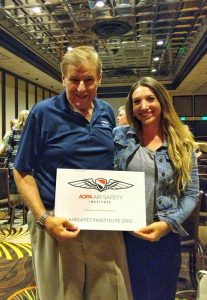
To bring the evening to a close, Wayne called me up to the front to be the Vanna to his Pat and pick names out of a champagne bucket to hand out prizes to the audience. The first winner was another female pilot (woo!) who claimed the “Hoodie,” a new incarnation of “foggles.” The second was a man who won a hat and immediately gave it back to Wayne, who then gave it to me (double woo!). The third and final winner was an older lady who won the other bright orange ASI hat.
After the seminar concluded, MacKenzie and I went to talk with Wayne. As a commercial pilot hoping to build hours and make money simultaneously, MacKenzie was hoping to find an alternative to becoming a CFI. Unfortunately for all readers in the same boat, unless you’re very lucky and happen to have a “rich uncle” or “sugar daddy” with an airplane you can fly for free, becoming a CFI is a “necessary evil.”
All in all, my first ASI seminar was hilarious and very helpful, prompting me to begin studying for my instrument rating now so that I can become a safer pilot and make the most out of my private pilot privileges, even just flying VFR.
If you want to find an ASI seminar near you, click here!












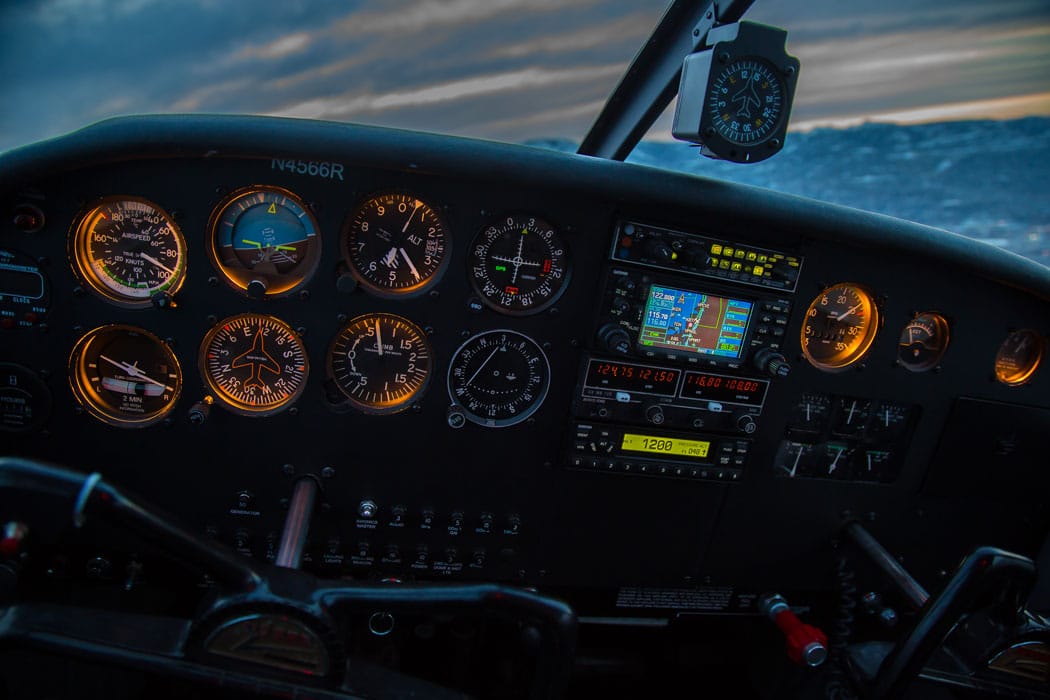
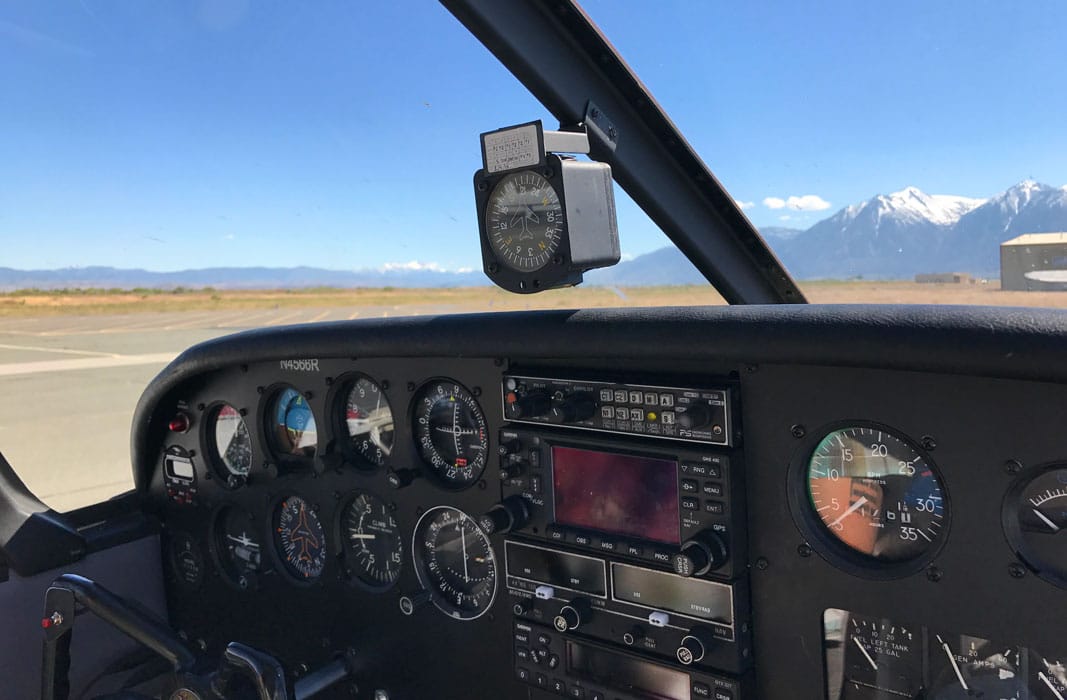
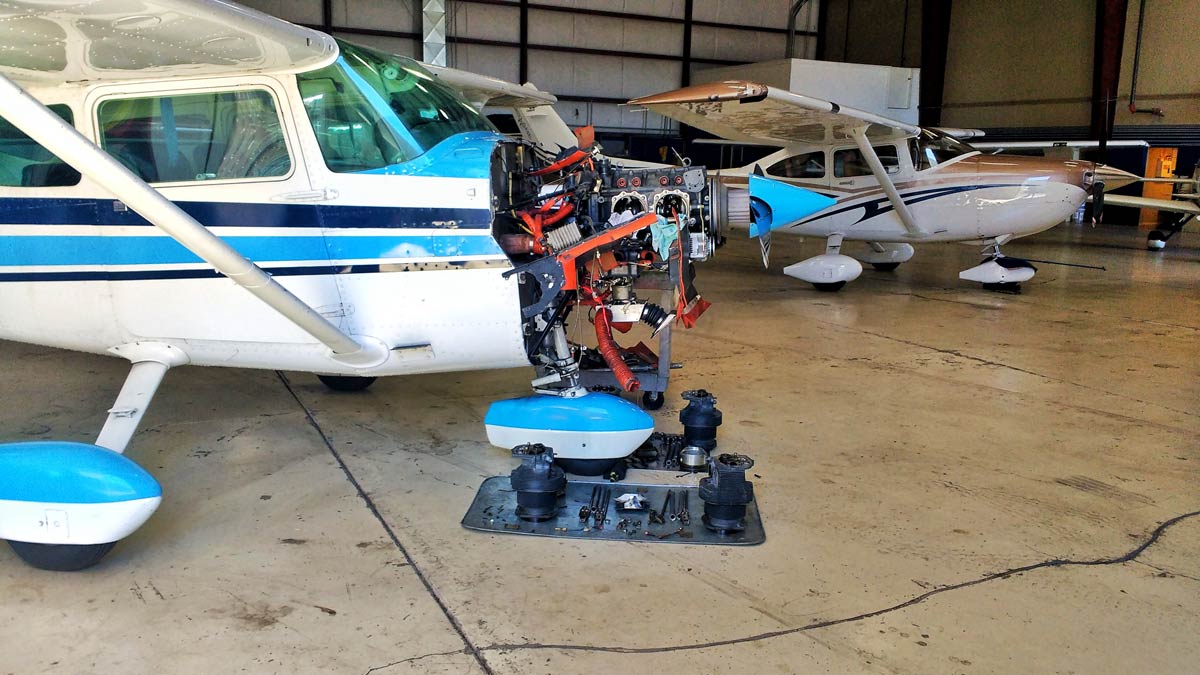
I’ve been a VFR pilot for 30 years. I used to love night flying my single. Then I had an engine failure with my family on board. The caused was f.o.d from the intake plenum–a known problem with an A.D that was scrupulously complied with. It’s funny to joke about turning the landing light off if you don’t like what you see when you have an engine failure at night, but that experience caused me to change my personal minimums in several respects, one of which is giving up night flight with passengers. It is both limiting and disappointing, but I don’t trust the machine as much as I used to. BTW, I’ve always been the sole owner and only pilot of my planes, and I partcipate in maintenance, do oil analysis etc.